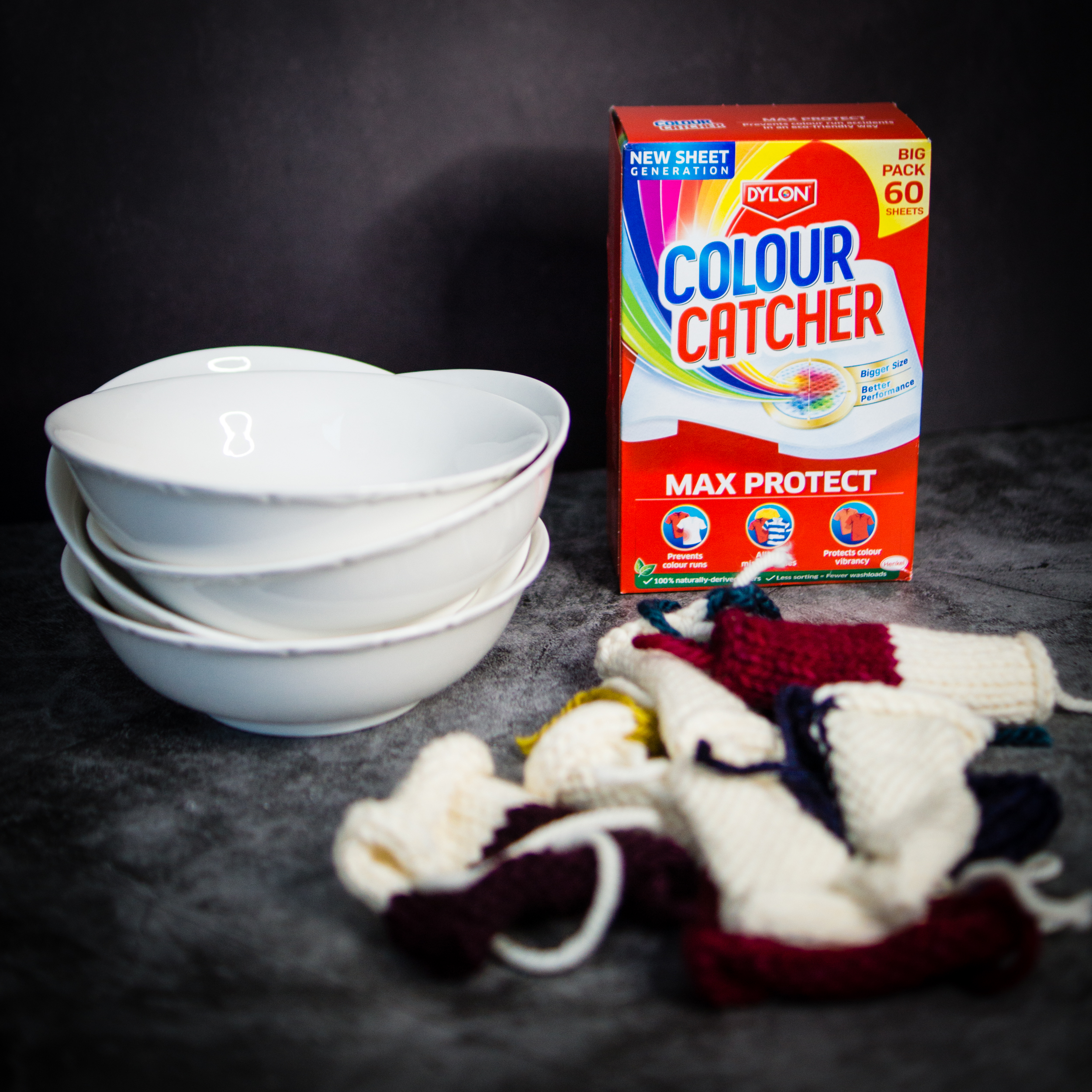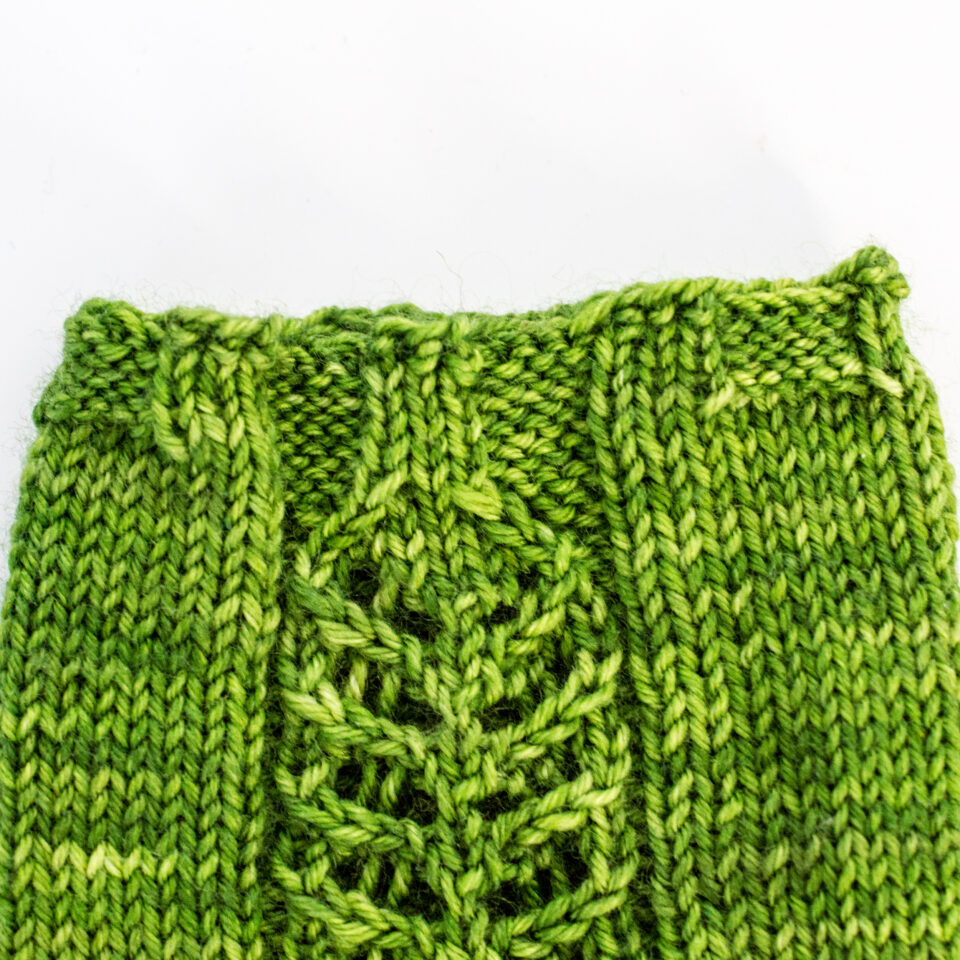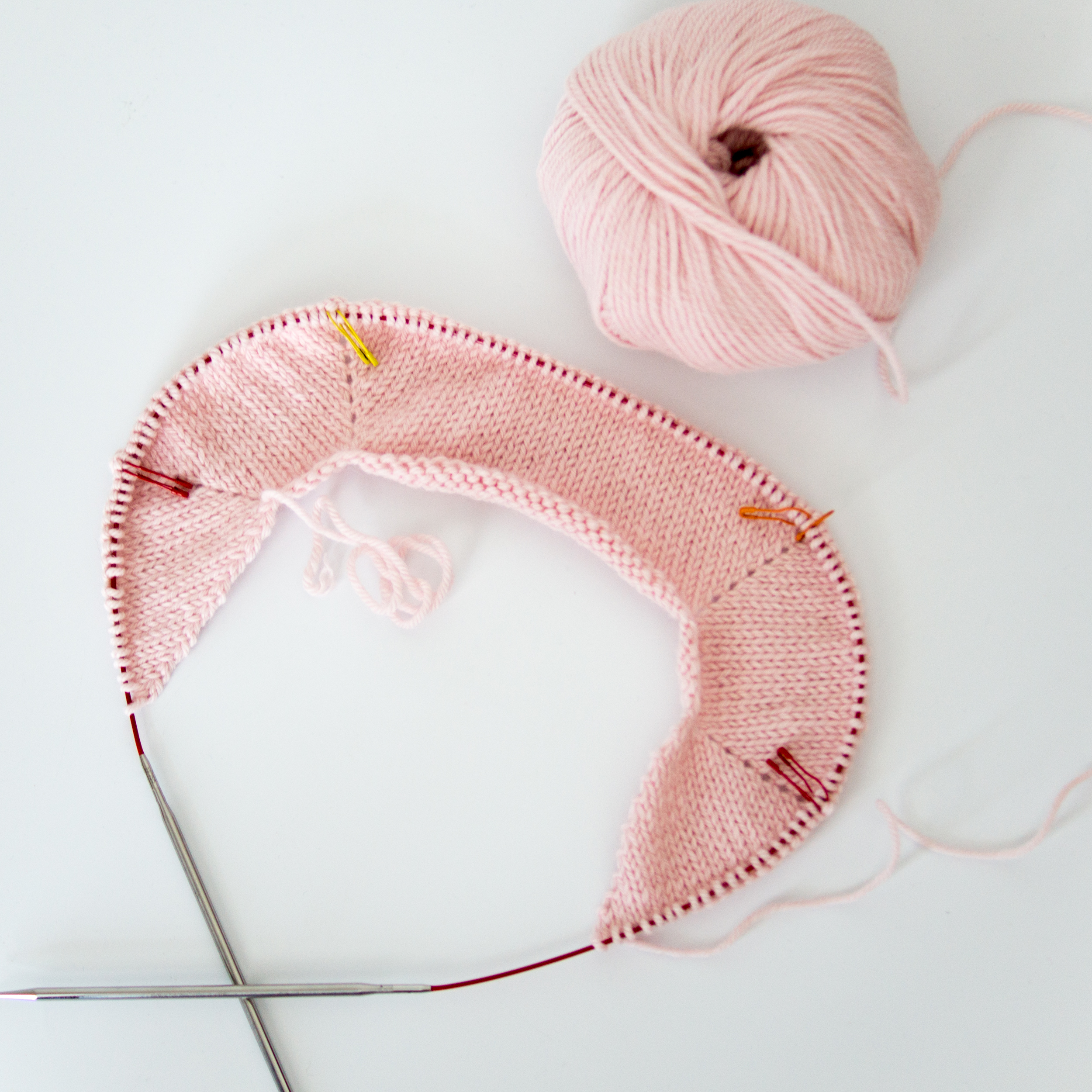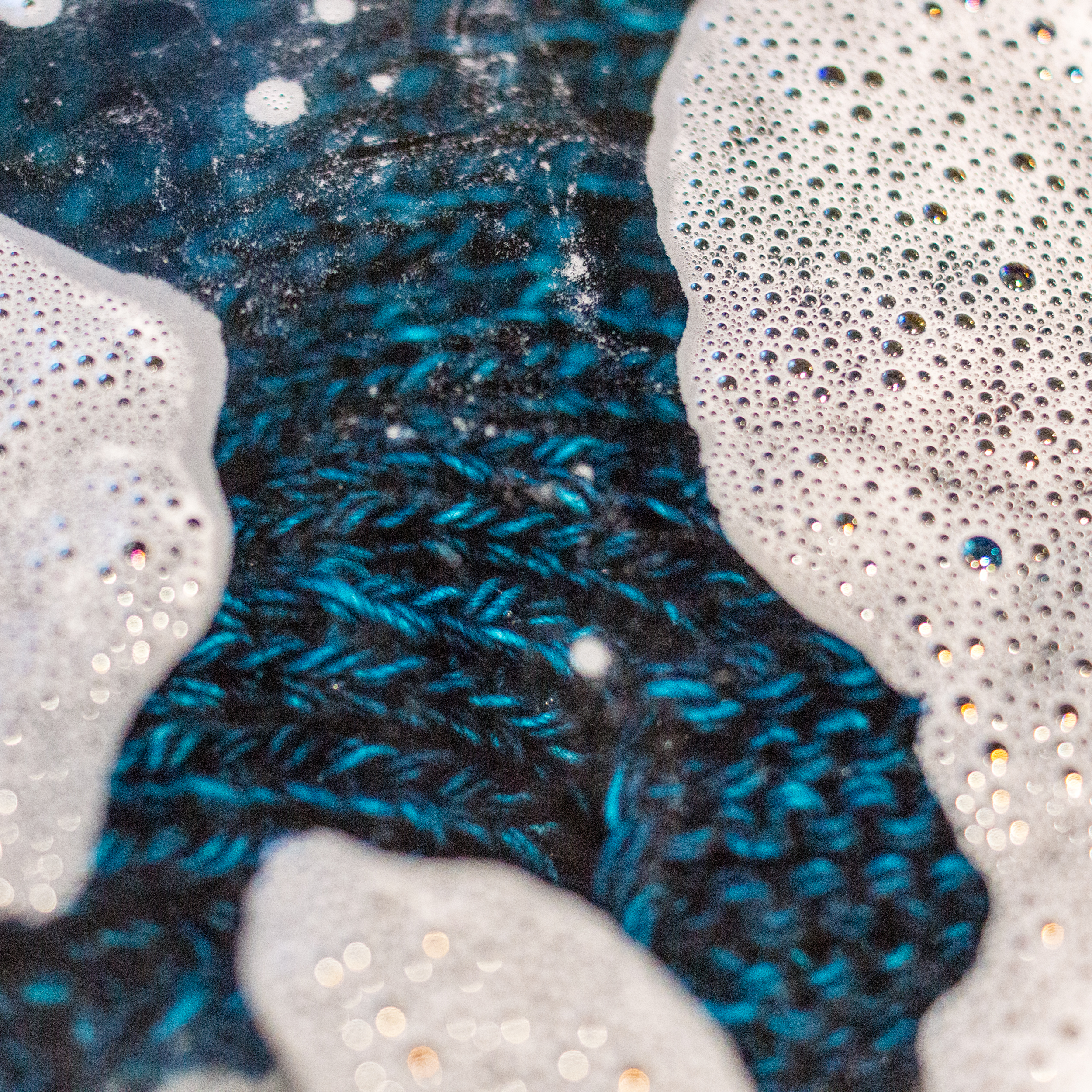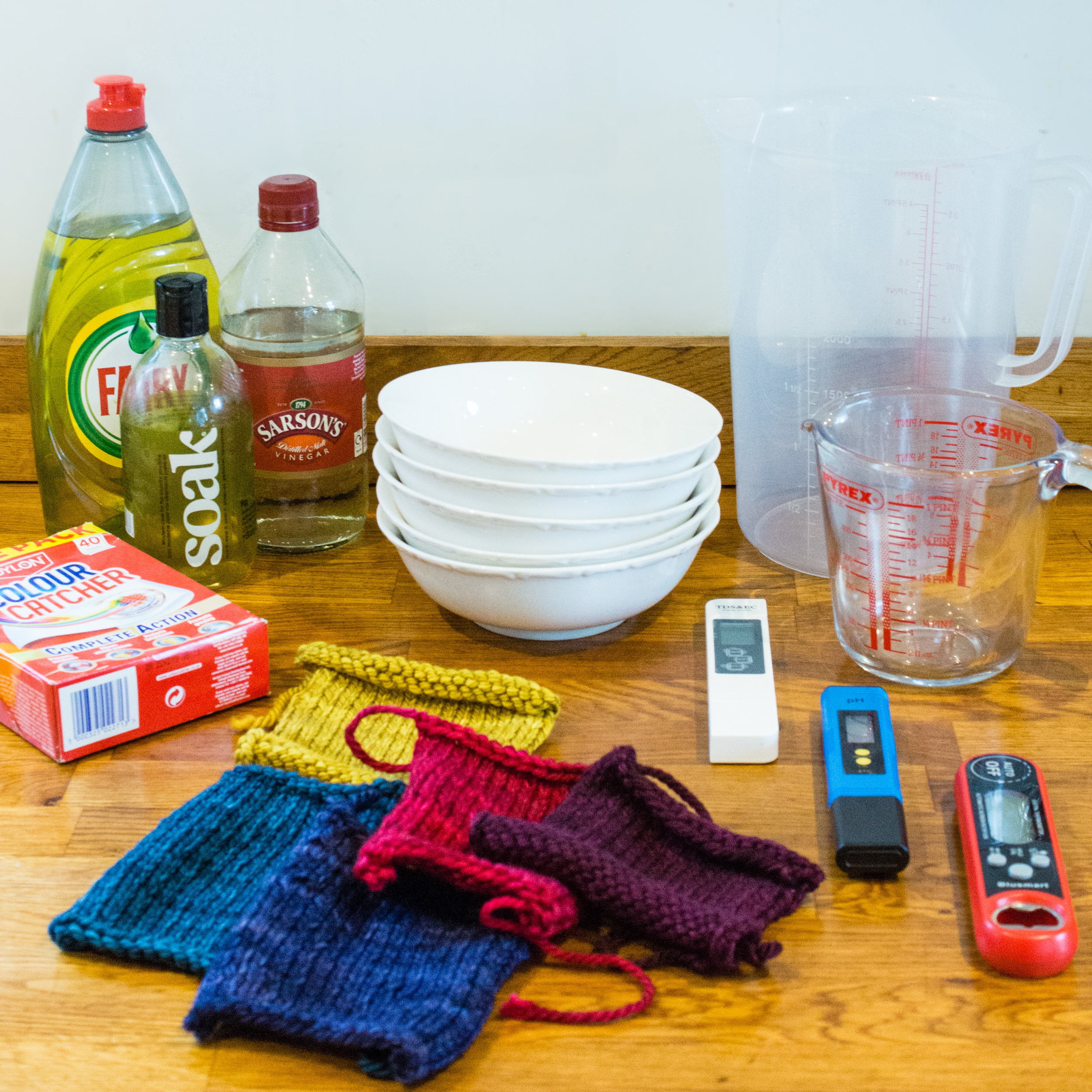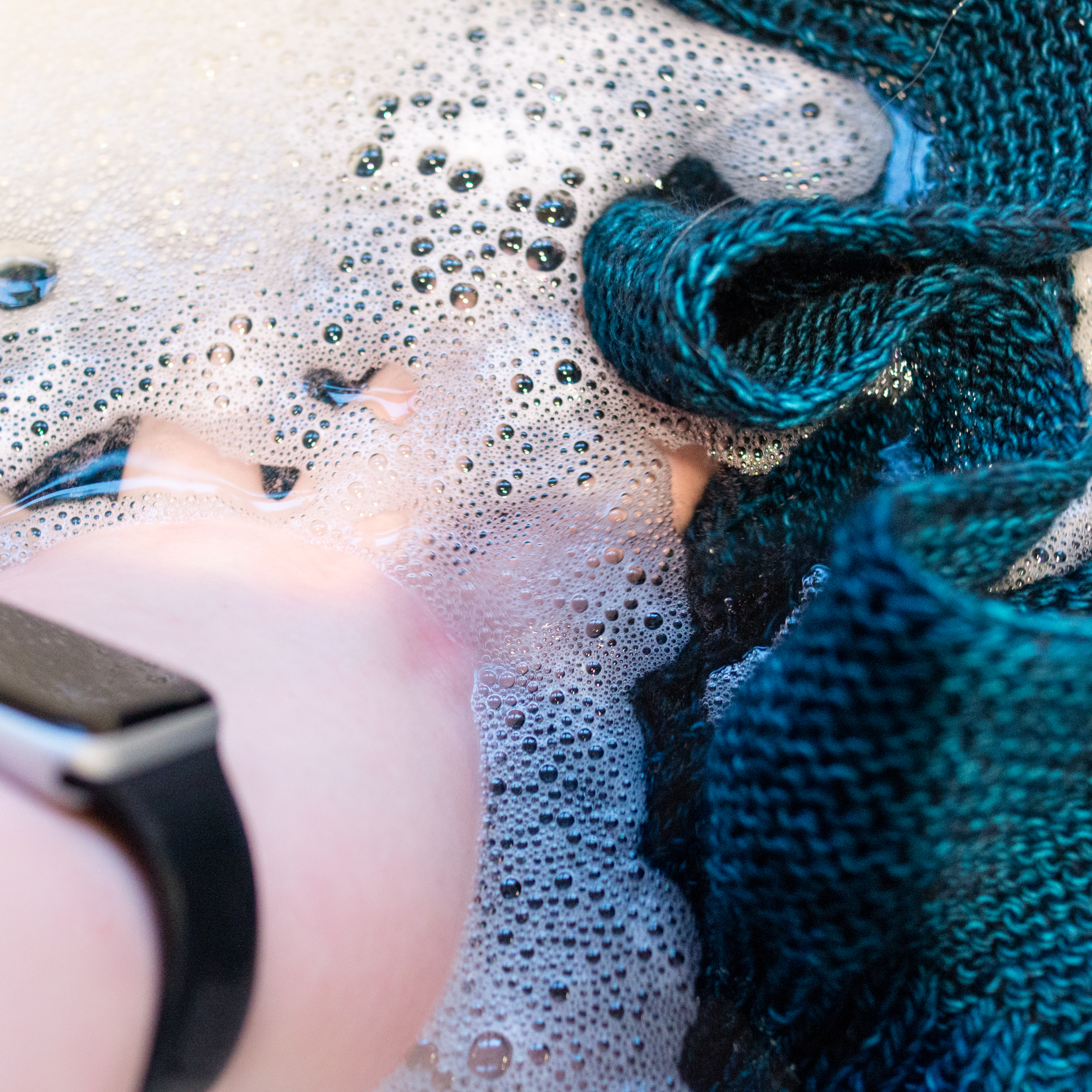In part 8 of the Yarn Bleeding Experiment, I’m wrapping up the original experiment with the final chapter: Colour Catchers.
If you haven’t already, head back and read Parts 1-7 first, so you know what’s going on.
Jump Links
Part 1: Introduction
Part 2: The Experiment
Part 3: Round One – Temperature
Part 4: Round Two – Wool Wash (Soak)
Part 5: Round Two – Wool Wash (Eucalan)
Part 6: Round Two – White Vinegar
Part 7: Round Two – Washing Up Liquid
Part 8: Round Three – Colour Catcher
Part 9: Results & Conclusion
A quick recap: I knit 5 swatches, each one half colour, half undyed yarn, in each of 5 colours, then put them into a cereal bowl with 1/4 of a Colour Catcher. I poured water over, left it for 30 minutes, then looked to see whether the colour bleed attached itself to the undyed yarn or the Colour Catcher. I used water that, based on parts 1-7, was best designed to make the yarn bleed: 50C hot, with 5ml Fairy liquid added. I needed it to bleed so that I could test whether or not the Colour Catcher prevented the bleeding colour from affixing to the undyed part of the swatch or not. Bleeding is rated on a scale of 0-2: 0 is no bleeding, 1 is a little bleeding, 2 is significant bleeding.
I kept the swatches in the same positions as previous rounds for easy comparison.
The readings on this one were very similar to the “Fairy” variation of Round Two. The pH of the water was 7.48 (7.37 previously) and the hardness measured 631 (722 previously – anything over 300 is “very hard”).
Here’s the results:
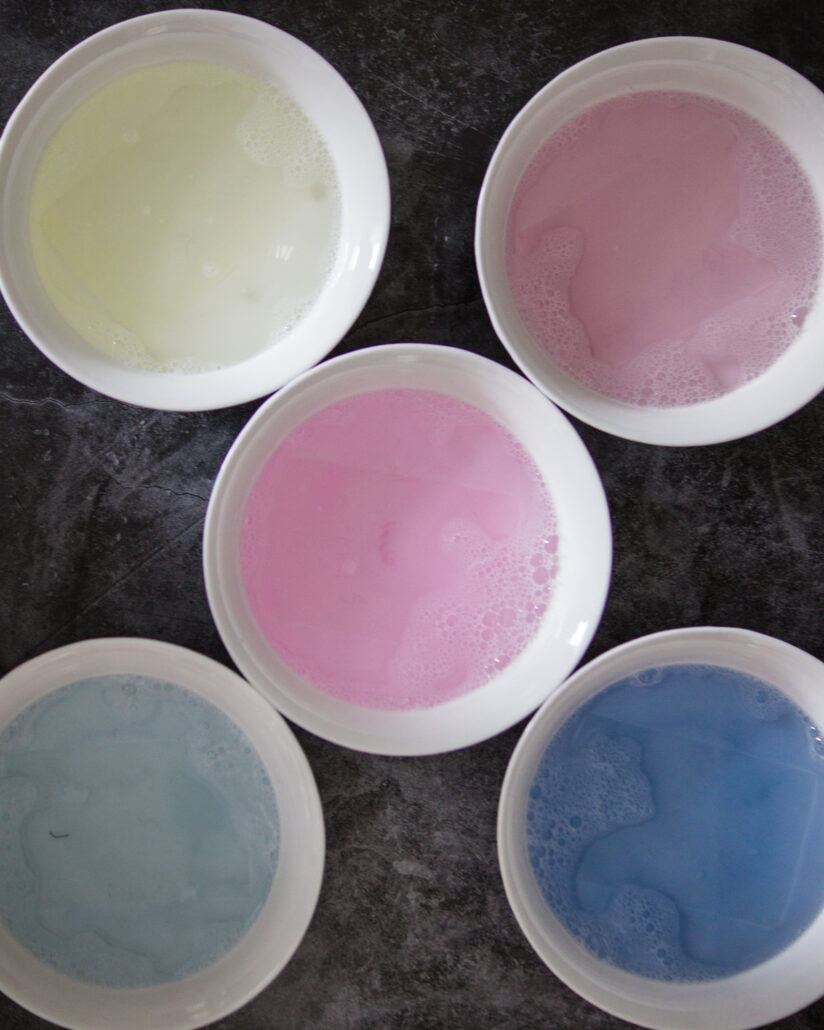
Top: Litha, Blackcurrant Jam. Middle: Ruby Slippers. Bottom: Storm, OOAK Navy.
I think it’s safe to say bleeding happened! I would rate all of these as a 2: significant bleed. But that’s not what we’re interested in this time. What’s important is, did this colour end up on the undyed yarn, or did the Colour Catcher save us? Let’s take a look at the Colour Catchers.
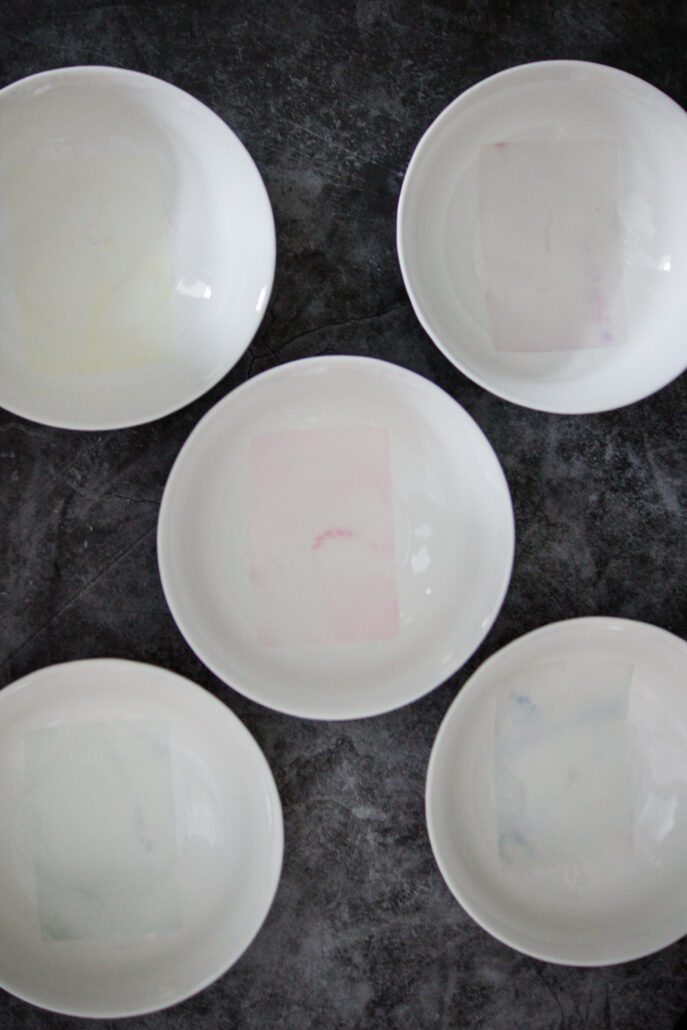
Well, after pouring off the water from each blocking bath, you can see that each Colour Catcher has caught some of the dye – but definitely not all of it.
In my experience with household laundry, they’re certainly capable of holding more colour than that, so I’m not sure why they didn’t in this case. Maybe the movement a washing machine provides is necessary, or maybe the dyes that come off clothes are a different chemical makeup than the dyes used for yarn. The why is certainly a question, but the most important question is this: was it enough to stop the dye from affixing to the undyed yarn?
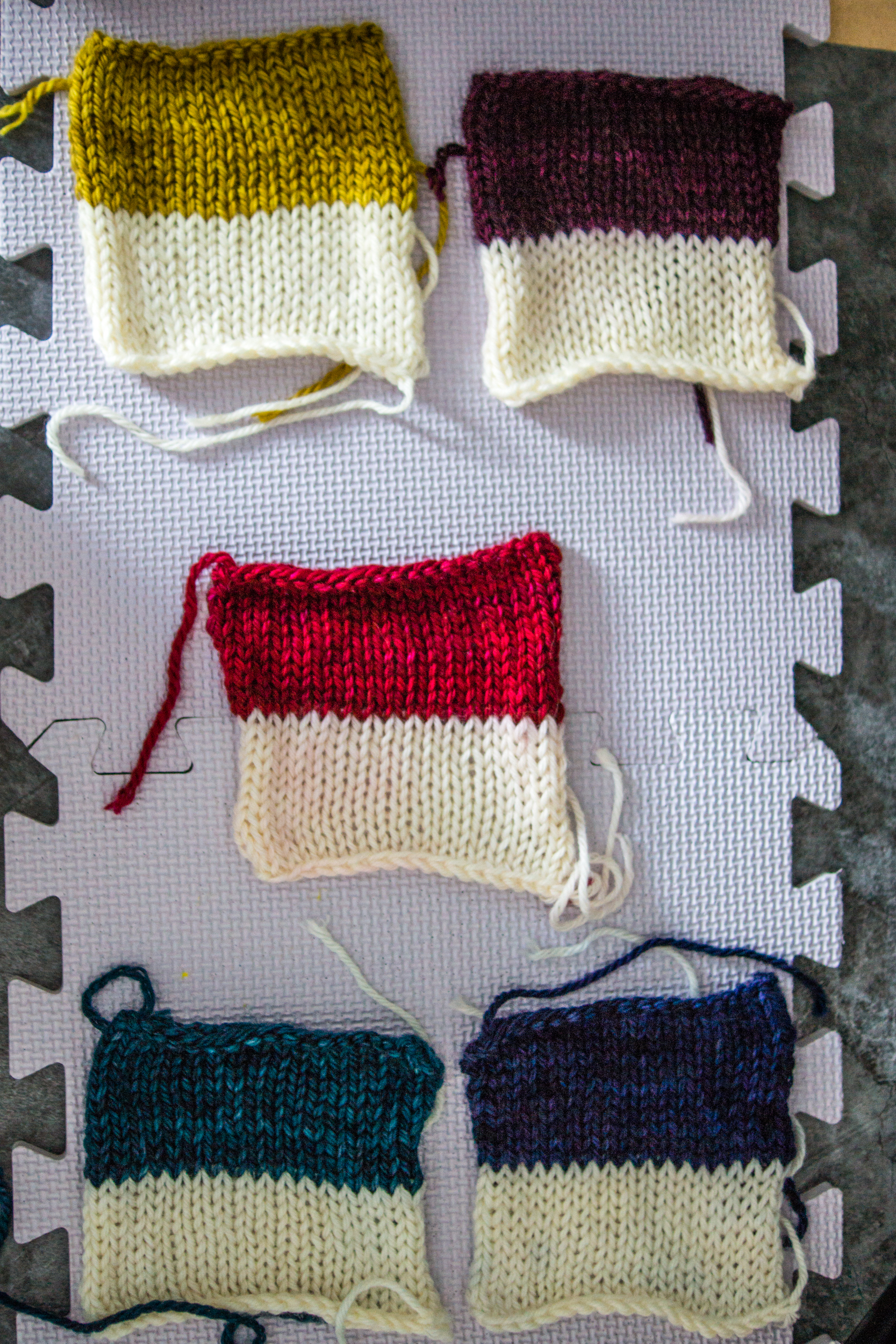
The short answer is… no. No, it wasn’t.
Although I don’t see any clear dye affixed to the yellow swatch, there’s clear bleeding on the other four. It’s proven difficult to capture on camera, but I promise it’s there! Here’s the same photo as above but edited to make it a bit more obvious:
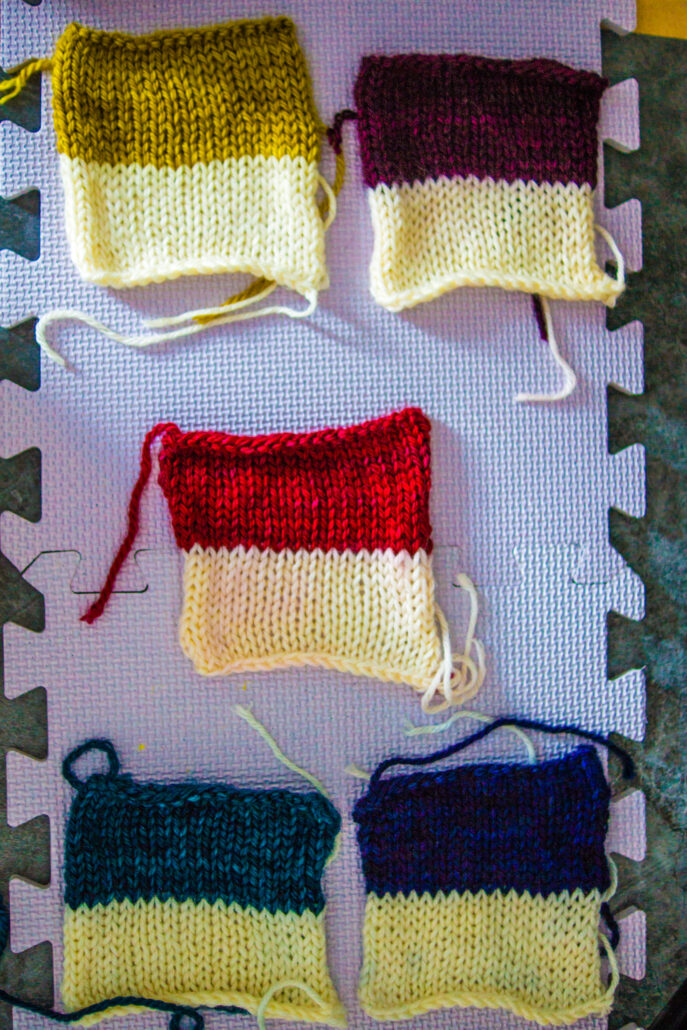
As always I captured the whole experiment on camera, and have sped it up for you to breeze through. At the end of this one there’s a closer look at the swatches and catchers, with some interesting results!
Join me next time for a write-up of all the lessons learned from this experiment in one handy post.
